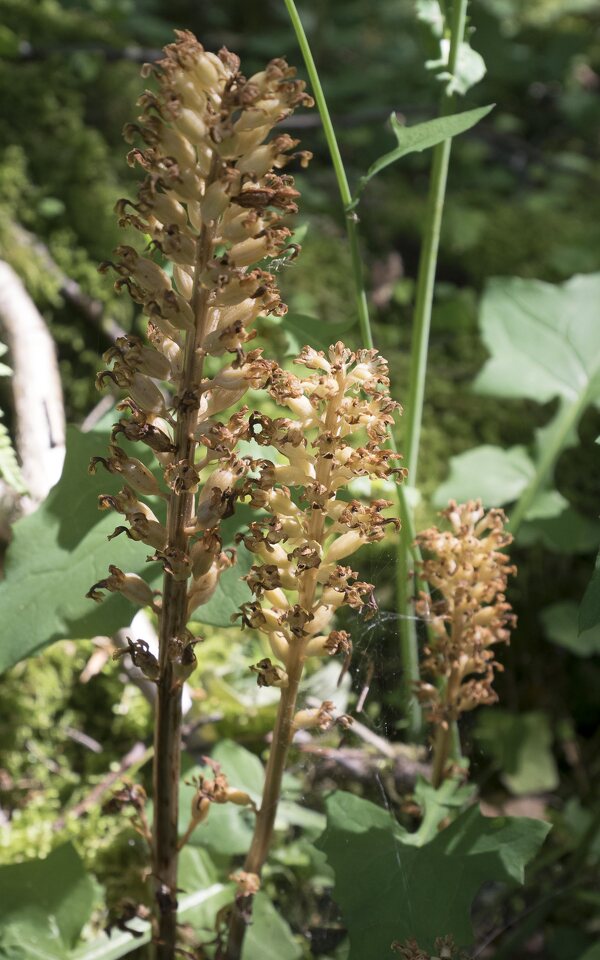
Neottia nidus-avis · rusvoji lizduolė
- bird's-nest orchid
- Vogel-Nestwurz
- rusvoji lizduolė
- parastā ligzdene
- gnieźnik leśny, gniazdosz leśny
It is a non-photosynthetic orchid, native to most of Europe, western Siberia, with sporadic presence in North-Africa and some parts of the Middle East, Caucasus, Iran and Turkey.
Neottia nidus-avis grows to 40 cm tall and each shoot can carry up to 60 flowers. Plants are not in any part green, deriving all their nutrition from a mycorrhizal fungus in the soil/litter, which in turn derives nutrition from the roots of trees. Plants are generally beige-brown, though sometimes yellowish or white forms are discovered. The flower labellum splits and strongly diverges at its lower end. This species of orchid can be hard to spot, being camouflaged against the leaf litter. Across Europe, this species flowers May-June.
Neottia nidus-avis has been found to flourish only in partnership with mycorrhizal fungi in the genus Sebacina, particularly Sebacina dimitica in the UK. Pollination is carried out by Diptera and possibly also ants. Self-pollination may occur if insects do not pollinate the plants.
Daugiametis, chlorofilo neturintis, rusvos ar gelsvos spalvos, 20–40 cm aukščio mikosimbiotrofinis augalas. Šakniastiebis gulsčias, gausiai apaugęs mėsingomis šaknimis. Lapai žvyniški, prigludę prie stiebo. Žiedynas tankus, iki 15 cm ilgio. Žiedai gelsvai rusvi. Lūpa dviskiautė, apie 12 mm ilgio. Vaisius – apie 10 mm ilgio dėžutė. Sėklos labai smulkios.
Lizduolės maisto medžiagų per simbiozę sudarančius grybus gauna iš medžių arba iš grybų skaidomų organinių junginių. Beveik neturi chlorofilo. Prikrausoma nuo grybo Rhizoctonia neottiae iš kurio gauna maisto medžiagas. Žydi V-VI. Žiedai kvepia. Lietuvoje viena genties Neottia rūšis – rusvoji lizduolė (Neottia nidus-avis). Apyretis augalas, aptinkamas beveik visur. Auga ūksminguose lapuočių ir mišriuosiuose miškuose, rečiau eglynuose, puveningame dirvožemyje.
‥
0 comments
Add a comment